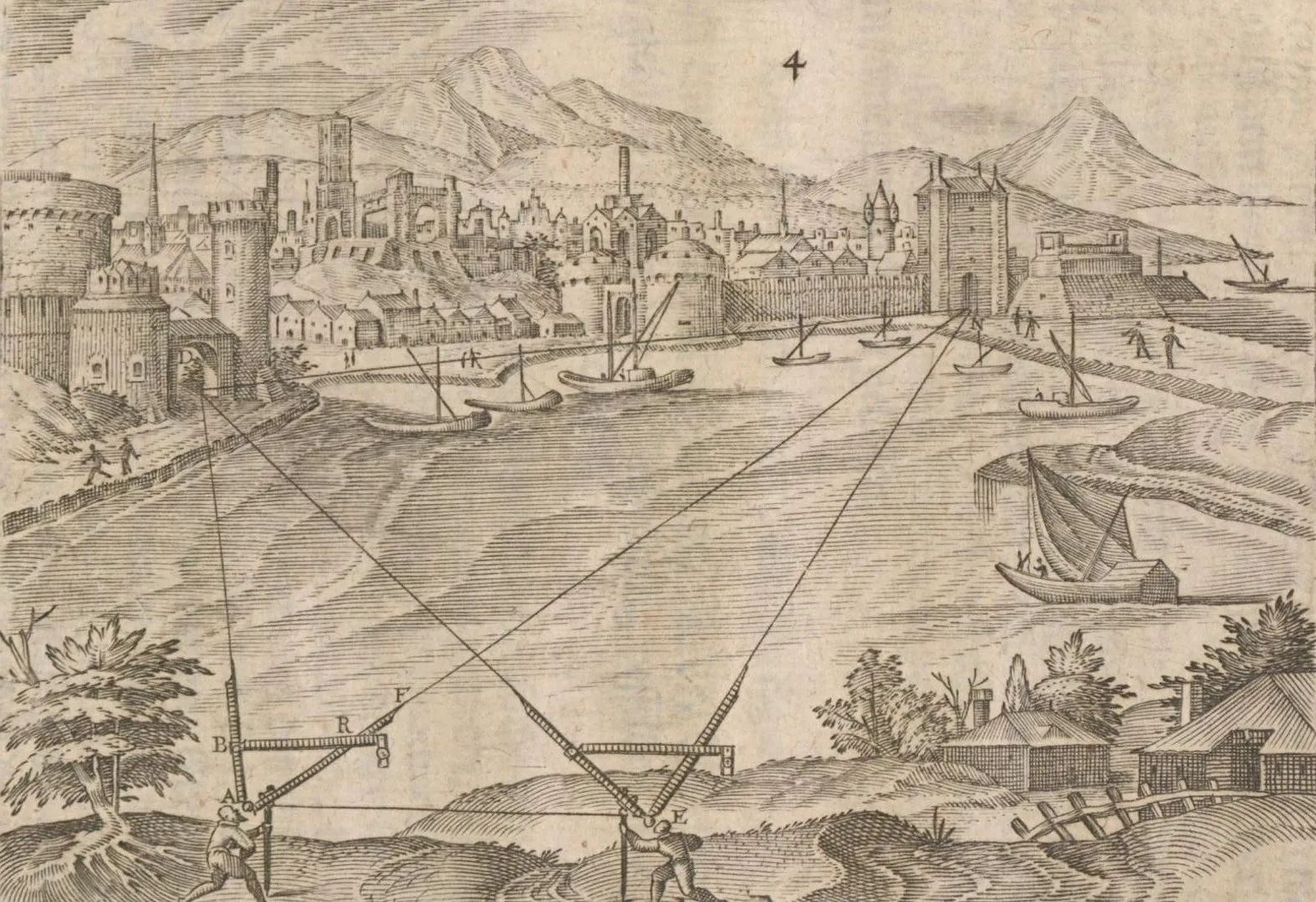The Role of Mathematics in 17th Century Surveying Instruments
In the 17th century, mathematics played a crucial role in the development of surveying instruments used for measuring distances, heights, and angles. Figures like Benjamin Bramer, Levinus Hulsius, and Leonhard Zubler were pioneers in this field, creating geometric tools that revolutionized the way we measure the world around us.
Benjamin Bramer: Triangulation Instrument
In his work Apollonius Cattus, Bramer introduces the “geometrical triangulation instrument” dedicated to Landgrave Wilhelm von Hessen. This tool, resembling a sector with two legs, a folding rule, and sights, was used to measure heights, depths, lengths, and widths. Bramer’s instrument was versatile, able to determine the height of towers, the depth of wells, and even the position of clouds. Additionally, it could be used to calculate the area of polygons, making it an essential tool for various applications.

Leonhard Zubler: Novum Instrumentrum Geometricum
Zubler, in his work Novum Instrumentrum Geometricum, presents a geometric instrument dedicated to Duke Friedrich von Württemberg. This tool, consisting of a sector with a folding rule and a semicircular protractor, had military applications and was used for measuring heights, distances, and angles. Zubler’s work also delved into the history of geometry, tracing its origins to Thales of Miletus in Egypt.

Levinus Hulsius: Theoria Et Praxis Quadrantis Geometrici
Hulsius, in his work, introduced the use of the geometrical quadrant for measuring heights, distances, and shadows. This instrument, depicted in Fig. 8, was essential for determining the dimensions of towers, columns, and natural features. It also had applications in astronomy, providing a method for measuring the height of mountains using shadow lengths.

Conclusion
The 17th century was a time of innovation and progress in surveying instruments, driven by the integration of mathematics into their design. Figures like Bramer, Zubler, and Hulsius paved the way for modern surveying techniques, laying the foundation for the precise measurements we rely on today.
References:
- Bramer, B. (1684). Apollonius Cattus.
- Zubler, L. (1625). Novum instrumentum geometricum.
- Hulsius, L. (1594). Theoria Et Praxis Quadrantis Geometrici.
Explore more historical technical marvels in the series by Herbert Bruderer, a renowned historian of technology.
About the Author
Herbert Bruderer is a retired lecturer in the Department of Computer Science at ETH Zurich and a respected historian of technology. He was recently honored by the IT History Society for his contributions to the field.


